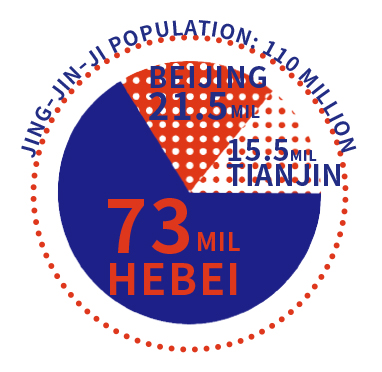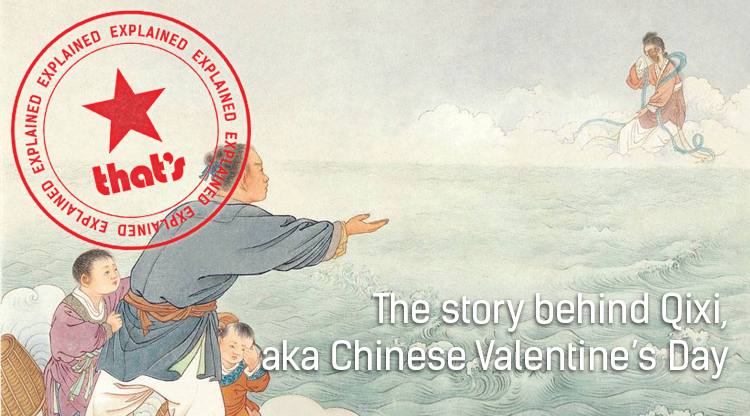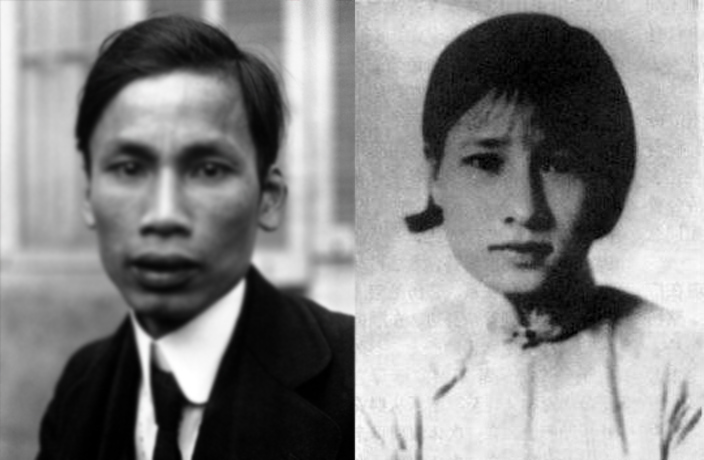It feeds us. It supports us. It surrounds us. If you look at a map, Hebei envelops Beijing like a hug. (Or a choke, given that the many of China’s most polluted cities are in the province.) Hebei supplies us city dwellers with wheat, energy and valuable natural resources.
But how well do we really know our neighbor? Its borders stretch south to Shandong and north to Inner Mongolia, and its topography is as diverse as its map would suggest. There are mountains, beaches, lakes. Ask a Beijinger what they know of Hebei, though, and they might harp on cliches – The Great Wall, farmland. Ask Google about Hebei, and its suggested related search term is “pollution.”
And yet, Hebei is more important now than ever before (with the notable exception of the 4th century B.C., when it was the seat of power for the ancient Yan state). It all started with the adorably named Jing-Jin-Ji: a gargantuan economic corridor linking Beijing (Jing), Tianjin (Jin) and Hebei (formerly known as ‘Ji’). The developing mega-region has sparked intermittent showers of investment in recent years. But things really kicked off in 2016, when the Chinese Government announced RMB247 billion in funding for Jing-Jin-Ji transport infrastructure – roads and railways that would turn the region into one fearsome megalopolis. Last December, Beijing completed construction of the 7th Ring Road (only 38 of its 940 kilometers are in Beijing – the rest are in Hebei).

But wait, there’s more. If there’s one thing China loves, it’s a big ol’ project with a fancy name. And Hebei is a playground for development initiatives. There’s the Bohai Economic Rim, an industrial corridor stretching from Shandong to Liaoning via Hebei’s capital Shijiazhuang. There’s the Green Necklace, a project to turn Hebei into an eco-friendly zone and reduce smog. And now, there’s Xiongan New Area, an ambitious push to turn three rural counties into the ‘next Shenzhen.’
In sum, there’s a lot of stuff happening. But what on earth does it all mean? How does anyone know their Special Economic Zones and their New Areas from their Economic-Technological Development Areas? Who lives in these places, and what do they think of all this kerfuffle?
In this three-part series we take a closer look Hebei.
READ MORE: Part I: The Rural Hebei Counties Set to Become the New Shenzhen

Hebei cuisine isn’t subtle. China Daily calls it “strong and savory.” Wikitravel calls it “meat-heavy.” These aren’t the terms we typically associate with gourmet dining experiences. But hey – we’ll let you judge for yourself.
Baiyangdian Fish
One of Hebei’s biggest tourist attractions, Baiyangdian Lake has been providing Hebeiren with fresh fish for centuries. Fish from the 365-square-kilometer lake are served all across southern Hebei, often grilled and doused in sweet brown sauce. Baiyangdian Lake also sits just beside one of China’s most polluted cities. Try not to think about that.
Donkey Burgers
Lurou huoshao (donkey burgers) are in such demand that the government of Burkina Faso had to ban donkey exports to China, as the country was running low on asses. Although demand has more to do with Chinese market for a gelatin made from donkey hides (it’s supposed to increase virility, longevity and more), donkey meat is still a specialty in Hebei, particularly between two slices of flaky bread.
Chengde Imperial Palace Cuisine
This isn’t a dish, but rather a bunch of dishes, served on high-end plateware, all at once, by your leagues of servants, because you are the emperor of China. Chengde’s cuisine has been shaped by the emperors over the centuries as they visited the city’s Mountain Resort, but even us plebs can chow down on imperial dishes – like Qinglong fish, or chicken wrapped in lotus leaves – at restaurants around the city.

Dong Cunrui (1929-1948)
A soldier in the People’s Liberation Army during the Chinese Civil War, Dong is famous for blowing himself up while destroying a Kuomintang bunker which guarded a key bridge in Longhua County, Hebei (Dong himself was from nearby Huailai County). Iconic images depict Dong moments before detonating the explosion, thus feeding into the soldier’s ‘hero’ status.

Xie Jun (1970-)
Baoding-born Xie is a chess grandmaster, with the distinction of being only the second woman to serve two reigns as Women’s World Chess Champion: from 1991 to 1996, and 1999 to 2001. Xie is known for her success and sunny disposition, as well as being the first of a number of strong Chinese women chess players.

Jiang Wen (1963-)
Triple-threat (actor-screenwriter-director) Jiang was born in Tangshan but moved to Beijing when he was ten years old, avoiding the deadly 1976 Tangshan earthquake. Jiang is known for his roles in Zhang Yimou’s Red Sorghum, Let the Bullets Fly (which he directed) and Rogue One: A Star Wars Story.

Jing-Jin-Ji
The collective name for Beijing (Jing), Tianjin (Jin) and Hebei (which was traditionally known as Ji). Urban planners envisage the region becoming an integrated and interconnected megalopolis of 110 million people.
Green Necklace
An initiative through which Hebei may shield Beijing from pollution. It is hoped that a combination of planting trees, connecting green spaces and restoring wetlands in the province can provide a protective ring around the capital.
Seventh Ring Road
The informal name for the G95 Capital Region Ring Expressway, a 940km ring road that connects a number of big cities in the region. Although dubbed Beijing’s Seventh Ring Road, 96 percent of it is in Hebei province.
Bohai Economic Rim
An economic zone linking Jing-Jin-Ji with areas near the Bohai sea, including parts of Liaoning and Shandong provinces. The zone’s strengths lie in heavy industry and manufacturing, especially automobiles, electronics and petrochemicals.
The numbers game...
11
The number of prefecture-level cities in Hebei. Their populations range in size from 3 million (Qinhuangdao) to 10 million (Baoding).
3.18 TRILLION
Hebei’s GDP in yuan, making it the 8th biggest provincial economy in China. By comparison, Beijing’s GDP in 2016 was RMB2.49 trillion.
95.68
The percentage of Hebei’s population that is ethnically Han. The biggest ethnic minority groups in the province are Manchu, Hui and Mongol.
88.3 million
The amount of steel, in metric tons, produced annually in Hebei’s industrial city of Tangshan – more than in the entire United States.
Read Part I of the 'Hebei Series': The Rural Hebei Counties Set to Become the New Shenzhen and stay tuned for Part III.























0 User Comments